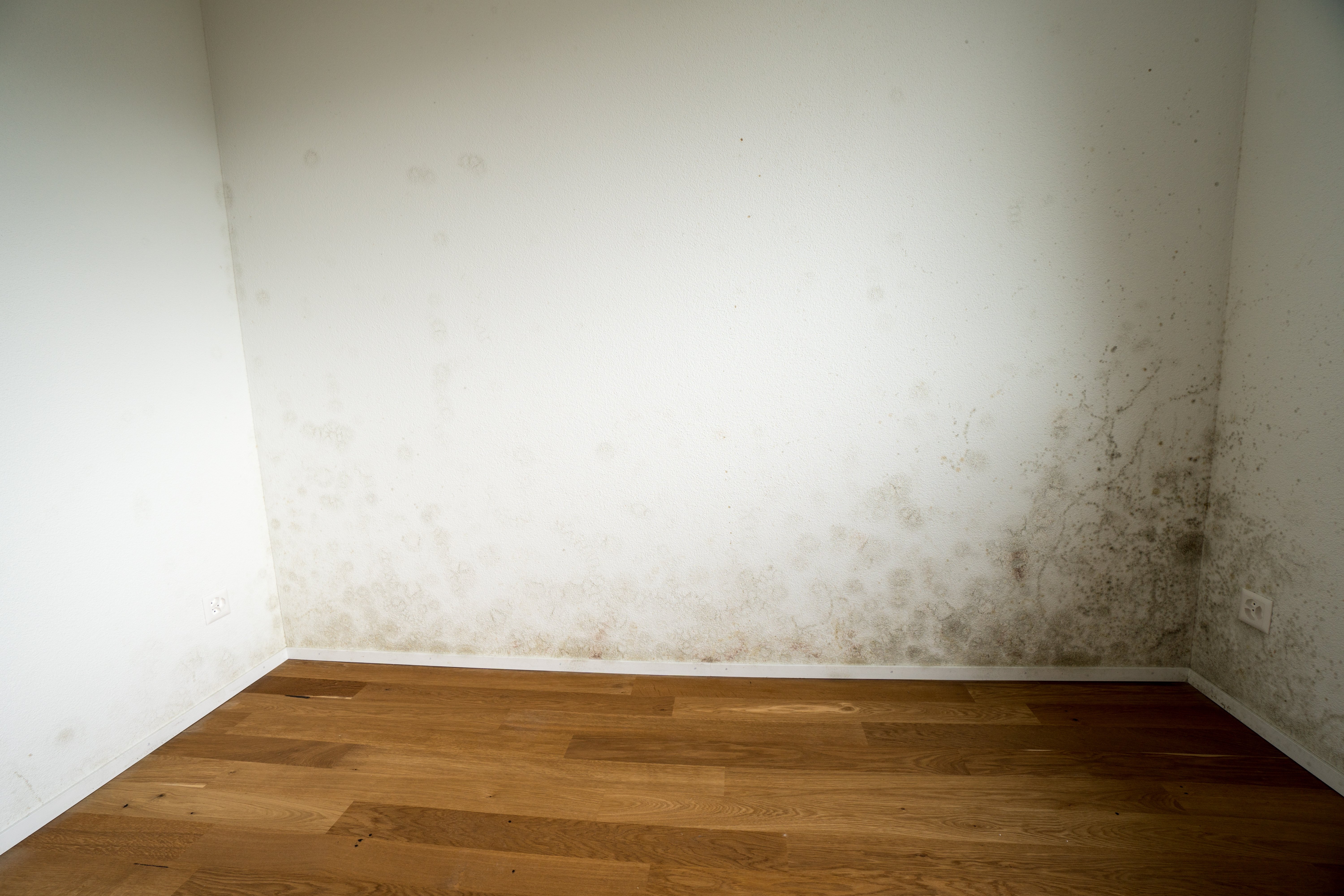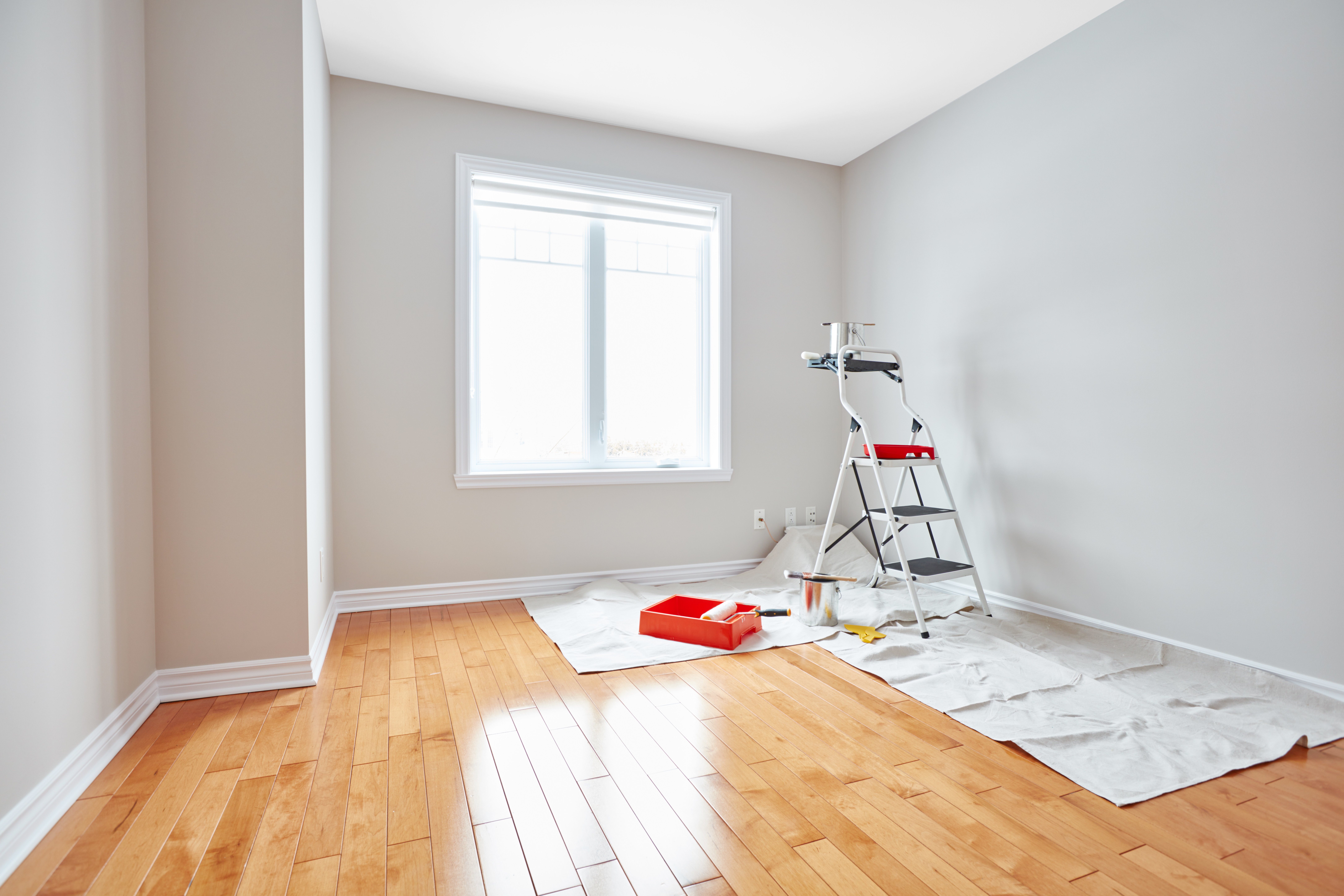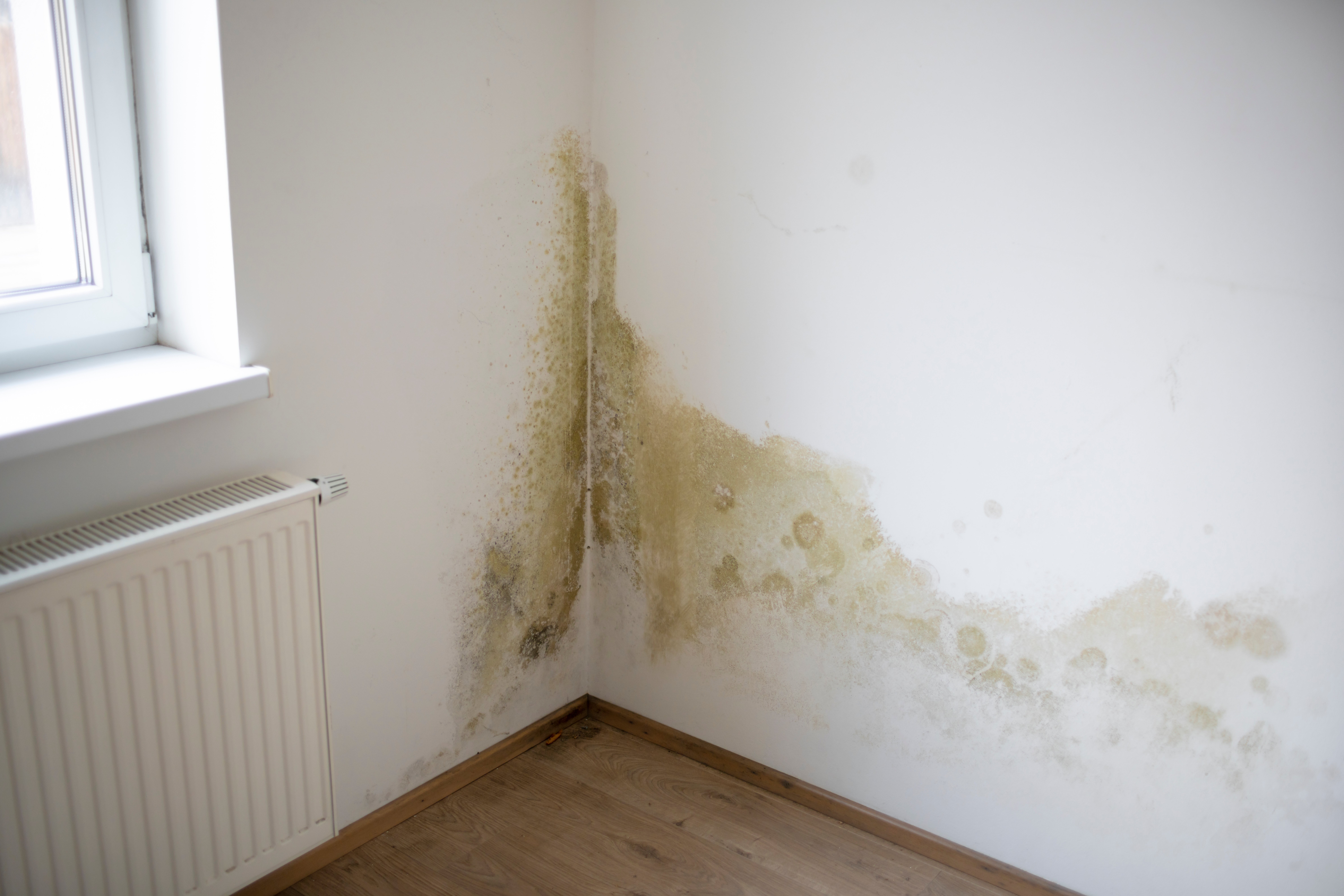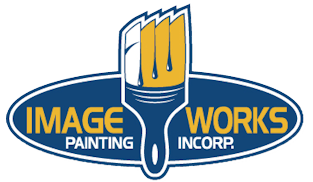What Do Painters Do About Mildew?
Jeremy HoldernessMildew tends to freak people out when they find it. You're likely to run across it on the painted surfaces in your basement, laundry room, or in and around the shower area of your bathroom. You may also see it on the outside of your home in areas that get little or no direct sunlight.
People often mistake mildew for mold and assume that their house is infested and will soon be uninhabitable. Although mildew is similar to mold, just because you have discovered it in your home doesn't mean that you have a major problem on your hands. In fact, professional painters deal with mildew all the time during painting projects. Getting rid of it can be a lot easier than you think.
Why Is There Mildew on My Walls?
You might have noticed that the areas I mentioned where you are likely to find mildew all tend to have something in common -- excess moisture. If you get rid of the excess moisture, you will eliminate the conditions that mildew needs to thrive.
Basements
Basements are humid, dark, damp, and they often leak because of inadequate foundation waterproofing. Besides the obvious need for properly eliminating water infiltration issues, one of the best things you can do for your basement is to install a dehumidifier that is correctly matched to the size of the space. Not only will it keep the humidity in the air down, but it will also greatly reduce the risk of mold and mildew growing on your walls as well as your stored belongings. It will also eliminate that musty odor that so many basements have! 
Laundry Rooms
Clothes dryers produce a large amount of damp air that -- when ventilated to the outdoors through a dryer vent pipe -- should not create a humidity problem for you indoors. However, dryer vent pipes are made of very thin vinyl or aluminum-foil material that is easily torn or punctured with wear over time. You should check your vent pipe occasionally to make sure it is still in good shape. If you notice any excessive moisture in your laundry room, you should replace it or at least check that your connections on both ends are secure.
Bathrooms
This seems to be the most common trouble spot, and where I have had issues in my own home in the past. A long hot shower can turn your bathroom into a tropical rainforest. And while many loos do have exhaust fans, most people only use them to clear the air after doing their business. But exhaust fans should be run for at least 15 minutes after every time a person showers to remove all of the built-up humidity. Otherwise, you're asking for mold and mildew to setup residence in your water closet. If you do not have an exhaust fan in your bathroom...you should get one!
How Do I Know for Sure That It is Mildew – And What Do I Do About It?
Mildew usually starts as tiny black specks so small they can barely be seen to the naked eye… but over time it can grow to create a nearly black surface. It is way, way better to not let it build to that point. The earlier you deal with it, the better off you’ll be.
Often simple dirt is mistaken for mildew. To confirm what you are dealing with, apply a few drops of household bleach to the area. If it greatly changes color to light brown or yellow, or if it goes away without much scrubbing and rinsing, the discoloration is probably mildew. If it does not change, it’s most like is just dirt.

Mold vs. Mildew
Distinguishing between mold and mildew is a little trickier than above…. but inside your house it really doesn’t matter if you identify it right, because you want to get rid of it either way. Mildew generally forms on the surfaces of areas that are subjected to short term humidity. In most cases, it can be surface-cleaned from painted surfaces with regular household bleach or (a more friendly to work with) anti-microbial cleaner like Concrobium Mold Spray and a little bit of elbow grease. If using bleach, a mix of 1 part bleach to 3 parts water will normally do the trick.
Mold, on the other hand, more often grows from underneath a surface, growing on and through organic substrates that stay wet for long periods of time, often from something like a leaky pipe or bad caulking around a window. If the black(ish) staining is coming through a surface – it could be growing through your drywall or coming through your linoleum floors – it is more likely to be mold. In this case you cannot just clean it from the surface. Mold should be professionally demo’d, using caution to not send the mold spore containing dust airborne through your HVAC systems or floating around the house. First and foremost, find the leak so it doesn’t come back after you replace the mold contaminated items!
How Do I Keep It Away?
First…. Do not ever paint over live mildew with regular wall paints. Once you have painted over mildew without killing it, it will grow through the paint and you’ll no longer be able to kill it by surface cleaning.
If you are going to be re-painting your walls after killing and cleaning away the mildew… and you want the paint to stick… make sure to rinse them very well with clean water to remove the bleach residue.
Other than eliminating the causes of the problem like I talked about above, you should use a quality mildew-resistant paint that is made specifically for potentially humid environments. Sherwin-Williams discontinued their mildew resistant product aptly labeled Bath Paint, but they have an interior Flat called Duration Home that works quite well and has good fungicidal properties out of the can. Zinsser Perma-White is an affordable mold & mildew resistant pant, but it isn’t always the nicest to apply. Benjamin Moore makes an outstanding bath paint called Aura Bath & Spa…. but it will not come cheap.

Whatever you do, avoid using alkyd, oil-based, or low-quality latex paints as they contain organic substances that will feed the fungal growth. I can’t tell you the number of painters I’ve heard say they’ll “just use oil-based paint to kill the mildew”. It works exactly opposite of that…. And you would not believe how much expensive damage has been done by this misunderstanding.
The old rule of thumb has always been to never paint over existing mildew in hopes of covering it up...it just does not work. However, recently Zinsser did bring a new primer onto the market called Zinsser Mold Killing Primer (people get paid to come up with these creative names). Mold Killing Primer is a water based, EPA registered fungicidal primer designed to paint over and kill all existing mold, mildew, moss, fungi, and odor causing bacteria. We have not tested this product yet…. So, I would use it with caution at first. My conservative instincts would lead me to still do the best job I can killing visible, existing organic/fungal growth… still properly clean the surface to promote adhesion… and use this product only as an additional safeguard under a high-quality finish paint.
What we do in Pittsburgh
In Pittsburgh, combating mildew is a crucial aspect of property maintenance due to the unique climate and environmental conditions prevalent in our region. The high humidity levels and fluctuating temperatures create an ideal breeding ground for mildew, posing a persistent challenge for homeowners and property managers alike.
To effectively address mildew concerns, we recommend leveraging techniques that have proven results in mildew removal.
Pittsburgh's climate significantly influences the prevalence of mildew, with seasonal variations playing a crucial role in its growth and spread. The humid summers, often accompanied by heavy rainfall, create optimal conditions for mildew to thrive, particularly in areas that are prone to moisture accumulation. Pittsburgh is a green areas with lots of shade and moisture. Mildew forms on the sides of every house in western PA. Exterior mildew needs to be cleaned sufficiently, or it will cause paint to peel and it will grow through the new paint and create an ongoing problem.
When addressing mildew concerns, it's crucial to recognize the importance of tailored solutions for specific areas. For instance, focusing on how to keep your Pittsburgh basement fresh involves strategic measures like proper insulation, regular air circulation, and investing in mildew-resistant materials. Additionally, selecting the right brush for mildew removal, one that combines sturdy bristles with gentle scrubbing capabilities, is essential for effectively tackling mildew growth without causing damage to the underlying surfaces. By employing these region-specific strategies and leveraging suitable products, Pittsburgh residents can proactively combat mildew and maintain a clean, fresh living environment.








